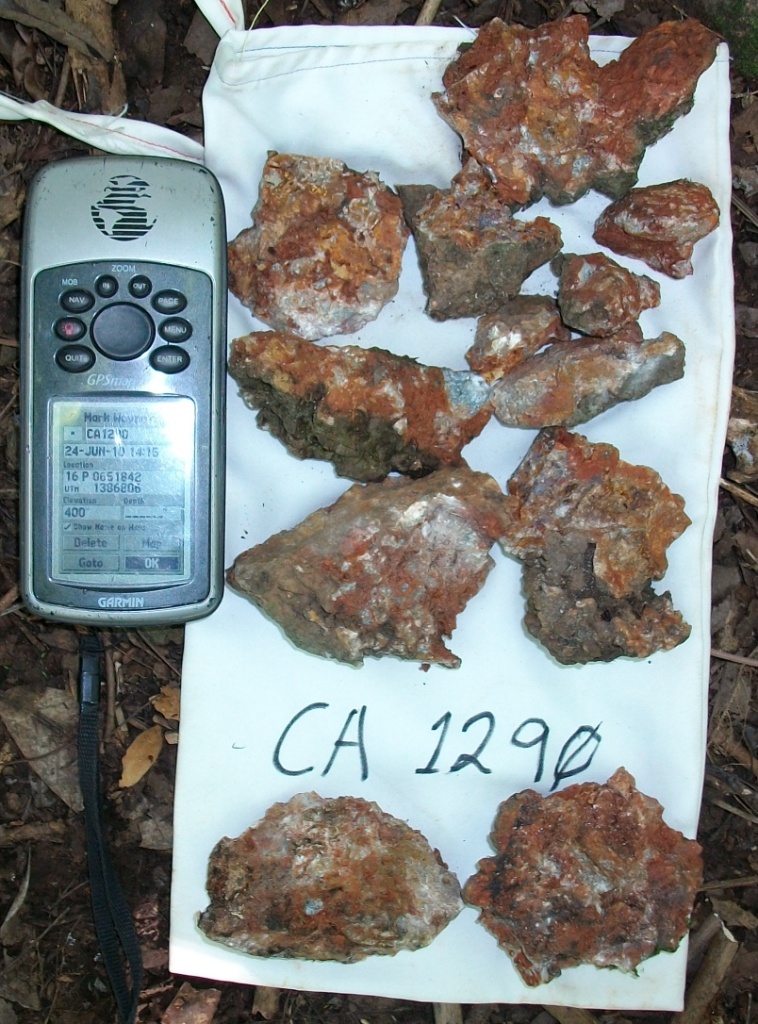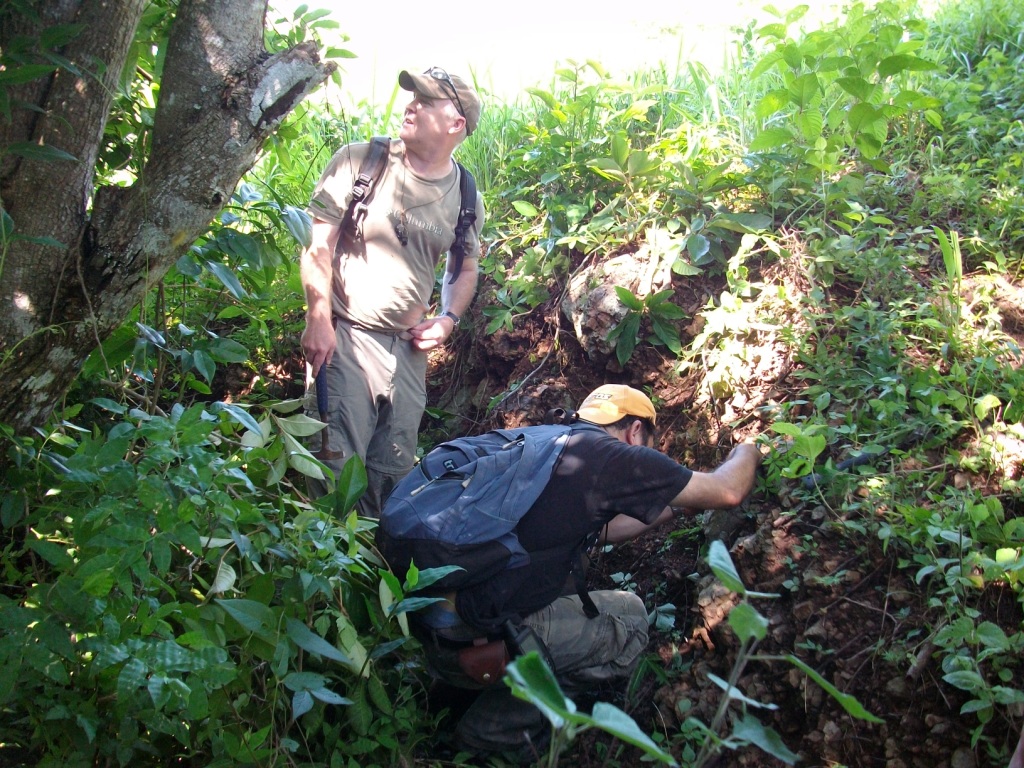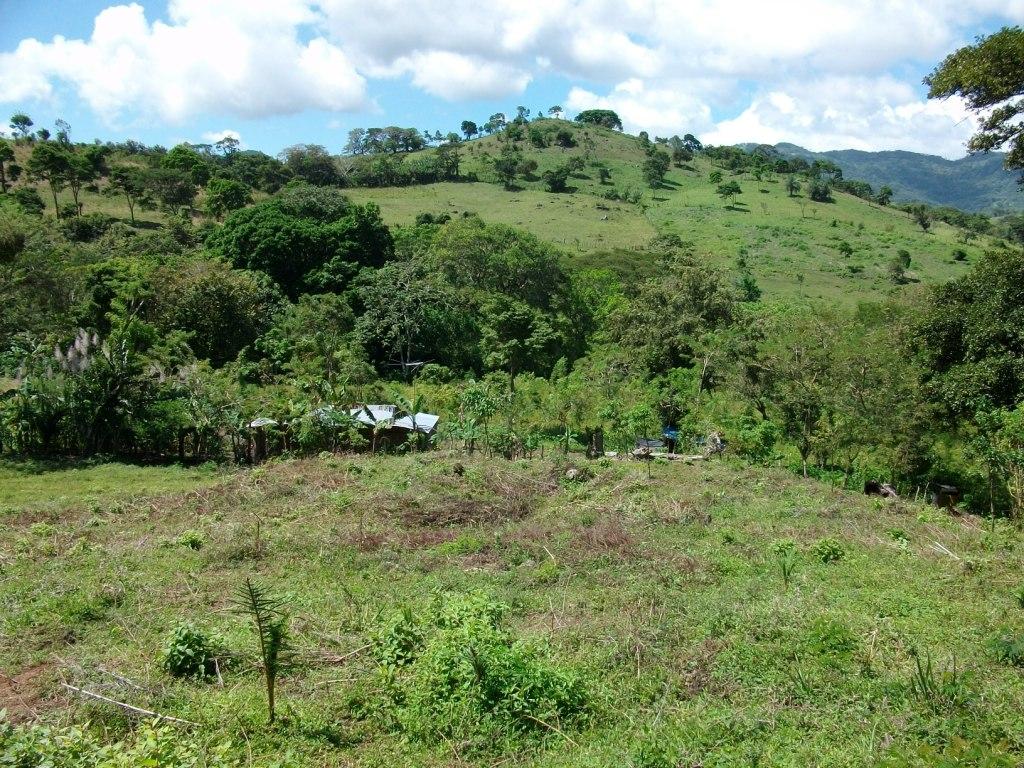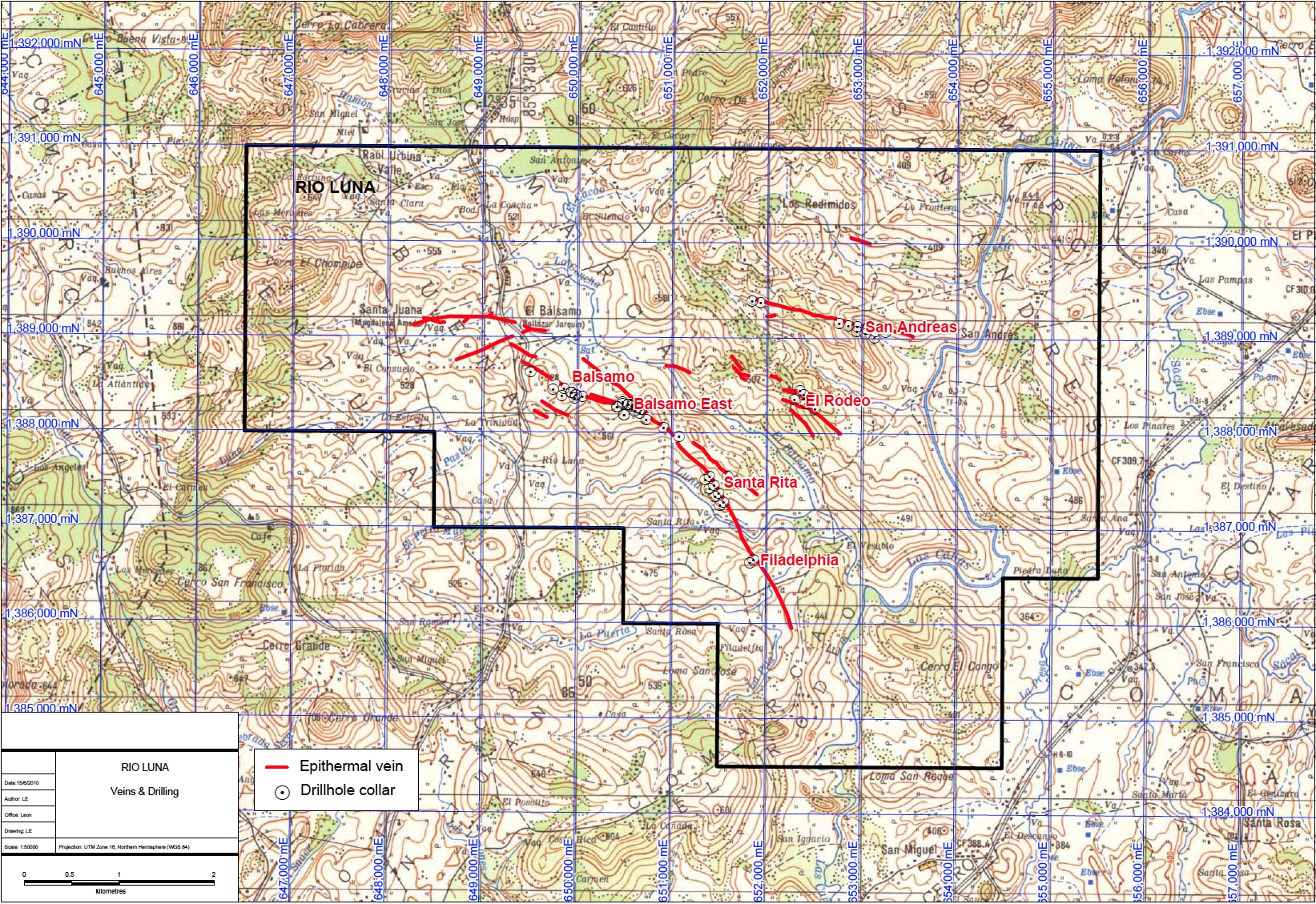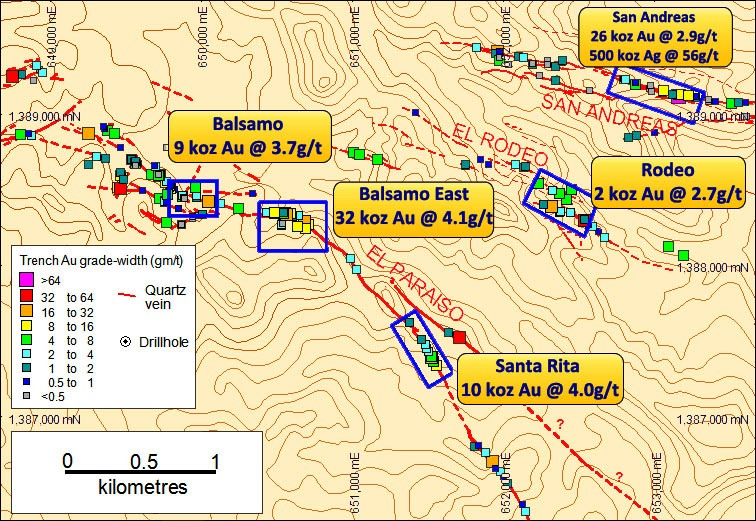Boaco Project
Rio Luna
Rio Luna is an advanced exploration project where the previous explorer First Point Minerals of Canada report spending over US$1.8 million between 2004 and 2008 on regional soil and rockchip sampling, and follow-up trenching and diamond core drilling.
The Concession, covering an area of 43km² in the Central Highlands of Nicaragua was granted to Condor in June 2010 and will expire in 2035. Previous explorer First Point Minerals completed an extensive programme of soil, auger, rockchip and trench sampling on the Rio Luna Project area to define 18km of epithermal quartz veining in three distinct northwest-southeast trending gold vein sets. This surface sampling defined seven principal prospects, five of which were drill-tested over several phases of drilling between 2004 and 2006, with a total of fifty-eight diamond drillholes completed for a total of 6,250m drilled.
The mineralisation is medium-sulphidation epithermal vein gold-silver type, hosted by a Tertiary-aged volcanic sequence of andesite flows intercalated with subordinate basalt.
Click here for map of Rio Luna Concession
The seven prospects identified by First Point Minerals are summarised below.
San Andres Prospect
Nine drillholes on 100m spaced sections have been drilled to test 500m strike length. Results are available only for the first set of drillholes which test mineralisation to a maximum depth of approximately 60m. A further two 100m spaced drillholes drilled 2km along strike tested the structure at 80m higher altitude.
At the main prospect 400-600m strike length of significant mineralisation has been defined with a low grade zone indicated by one of the four drillholes that define this zone. Up to three close-spaced parallel mineralised veins have been intercepted in drilling with both narrow high-grade and wider moderate grade zones present.
Low grade mineralisation (<400ppb Au) in the two drillholes drilled 2km along strike to the east may indicate that they are above the main mineralisation level as they intercept the structure 80m higher than at the main prospect.
Balsamo East Prospect
Nineteen drillholes on 50m spaced sections covering a 300m strike length with two further drillholes testing the structure further along strike to the southeast to extend coverage to over 600m total strike length.
Drilling results show a complicated structure, with varied wide and narrow intersections, including some high-grade material. The wide intersects may be genuinely wide loads or may represent a second vein orientation at an acute angle to the drilling direction, however the overall geometry of the mineralised structure does appear to dip towards the south, thereby validating the drilling direction used (towards the north). Regional mapping suggests that the Balsamo Prospect is located on a flexure in the vein system. Such flexures are usually points of maximum dilation where subsidiary structures in a variety of orientations can form, resulting in thicker, more complicated vein systems.
Mineralisation is open to depth and along strike to the southeast. The wider mineralised zone hosts potentially mineable intersections and grade. If this structure can be traced to depth, or repetitions can be discovered (perhaps as an en-echelon system along the hinge of the flexure) then this structure has resource potential.
Balsamo Prospect
Ten drillholes on four 100m spaced sections and one 50m infill section covering a 300m strike length were completed. All drilling was to the north because a south-dipping mineralised vein was assumed. However, the very wide mineralised drill intersections encountered may indicate that the vein actually dips to the north and the drilling intercepted mineralisation at a shallow angle.
No attempt is made to estimate the true thickness of the mineralised structure.
Santa Rita Prospect
Ten drillholes on 100m spaced sections have been drilled to test
1. 400m strike length to a maximum true depth of approximately 75m on the main vein, and
2. 100m strike length to a maximum depth of approximately 30m on a parallel northern vein.
Drilling on the main vein indicates that the mineralised epithermal vein dips to the southwest with an enriched zone of 100-300m strike length plunging to the northwest. The wide-spaced drilling means that there is a high degree of uncertainty in this geological interpretation and infill drilling is required.
The parallel vein to the north was only tested by two drillholes, located 100m apart along strike. A high-grade but narrow quartz-carbonate vein (0.2m at 8.29g/t gold from 34.9m drill depth) was intersected in one of the drillholes. This mineralisation is not considered to be properly tested and remains open along strike and to depth.
Filadelphia Prospect
Two drillholes were completed testing one coss-section at different depths. The drilling intersected a southwest dipping sulphide-bearing quartz-carbonate vein. Mineralisation is open along strike in both directions and to depth.
Santa Juana Prospect
While trenching has been carried out, no drill testing has been completed.
El Rodeo Prospect
Two parallel gold mineralized structures were identified at surface and five drillholes on 100m spaced sections were drilled to test:
1. a 200m strike length of the Southern Structure to a maximum of approximately 30m depth, and
2. a 100m strike length of the Northern Structure to a maximum of approximately 30m depth.
Drilling on the Southern Structure intersected two parallel veins dipping to the southwest which are narrow and of low grade where drilled.
A wide low grade intersection on the Northern Structure suggests that the vein dips in the opposite direction, to the northeast, so that drilling was sub-parallel to the vein intersecting mineralisation at a low angle, and in one case missing the vein altogether. It is therefore difficult to estimate the width of the vein, but assay results indicate less than 2g/t gold where drilled. Mineralisation remains open along strike and to depth.


